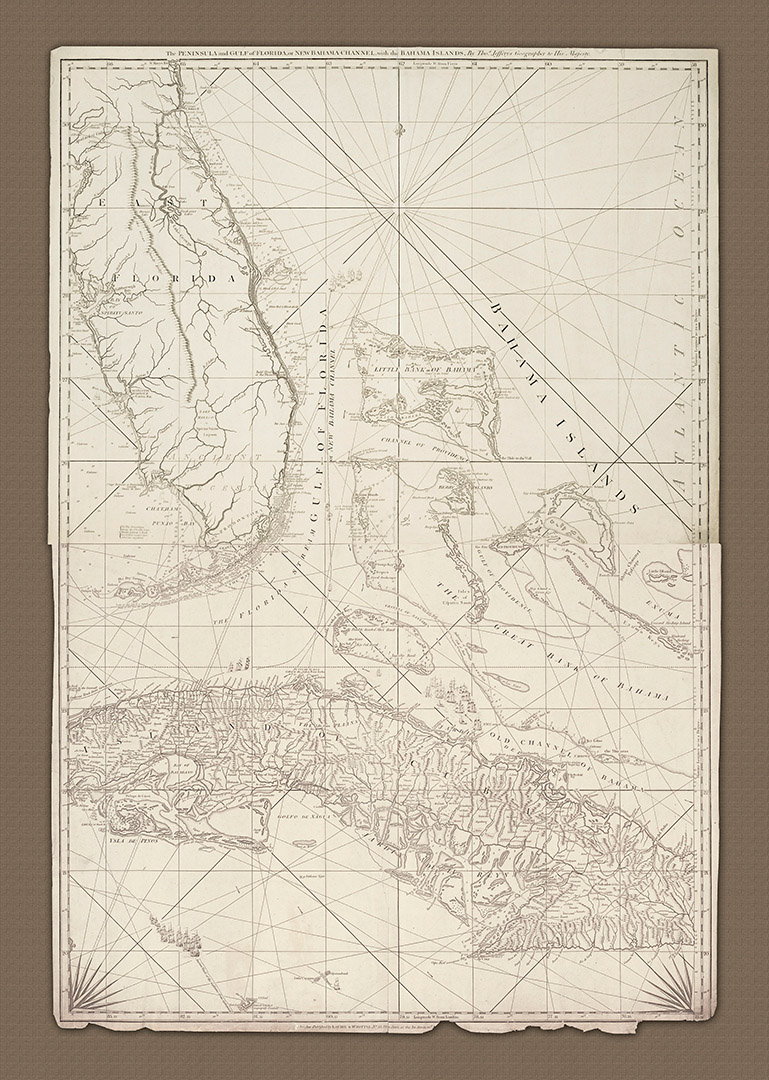A415 - Florida with the New Bahama Channel, the Bahama Islands, Martyrs and Cuba
The two sheets which make up this attractive chart are very much in the style of other charts produced by Thomas Jeffreys as far back as 1768. This particular material was, after Jeffreys death in 1771, published posthumously under his name by Sayer and Bennett in The West Indies Atlas (1775).
- 1794
- Thomas Jeffreys
- h45" x w29"
- P
The chart presented here is in fact an amalgamation of two of those separate sheets (see Heritage Charts A412 & A704), which by 1794 had been acquired by London publishers Laurie & Whittle and reissued as part of their new catalogue.
Jeffreys includes, on the northern sheet, a great deal of hydrographical information around the Florida Peninsular and around the Islands of the Bahamas. This includes soundings and channels. He also marks sandbanks, reefs currents, anchorages and includes 'rhumb' or loxodromic lines [1].
The inclusion of ships to illustrate the passage through the New Bahama Channel not only decorates the chart but it also highlights the economic importance of the area at the time. Jeffreys also includes some cartographic detail on the mainland Florida Peninsula which includes land relief shown pictorially, rivers, lakes and fresh water sources. Interestingly enough he includes no settlements, towns or ports other than that of St. Augustine on the north east coast.
The Southern sheet shows mainland Cuba and the Florida Keys. The sheet also includes a great deal of hydrographical information through the great Bahama Banks north of Cuba. He also includes sandbanks, reefs currents, anchorages and more Rhumb lines.
The Florida Keys and the Martyrs are also shown with detailed hydrographical information. Once again he uses ships to illustrate the channels and the economic importance of the area at the time.
There is also good deal of detail provided about the island of Cuba; Relief is depicted pictorially and all of the major settlements are shown, along with major roads, paths and rivers. The map even details cattle farms ('Hatos') or large herds of cattle on the south Eastern coast of the island.
Overall, the chart is very stylish and it does everything one would want as an arm-chair sailor back in London: It is informative, artistic and historic, but one wouldn't, necessarily, want to navigate by it!
[1] Taken from an initial bearing it is a line on a sphere that cuts all meridians at the same angle. It is the path taken by a ship that maintains a constant compass direction. Such lines were only really useful in waters that were bounded by not too distant landfall as they did not take account of the curvature of the earth.
- Florida with the New Bahama Channel, the Bahama Islands, Martyrs and Cuba


